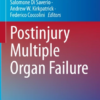Management of Severe Traumatic Brain Injury 2E PDF
FREE
Management of Severe Traumatic Brain Injury 2E PDF is a fully updated neurosurgical reference that provides comprehensive guidance on the assessment, treatment, and rehabilitation of patients with severe traumatic brain injury (TBI). Authored by internationally recognized neurosurgeons, intensivists, and trauma specialists, this book integrates the latest evidence-based guidelines with practical clinical strategies. Moreover, it combines detailed pathophysiological insights with case-based applications, making it an essential resource for improving survival and neurological outcomes in patients with severe TBI.
Why This Book Matters
Severe traumatic brain injury remains one of the leading causes of morbidity and mortality worldwide, particularly among young adults. Its management requires rapid assessment, advanced neuromonitoring, and multidisciplinary decision-making to prevent secondary injury and optimize recovery. Therefore, this book equips clinicians with structured frameworks for acute management, surgical interventions, and long-term rehabilitation. Furthermore, it emphasizes advances in neurocritical care, multimodal monitoring, and individualized treatment strategies that reflect current best practices.
For additional resources, visit the Brain Trauma Foundation (BTF) or explore critical care guidance from the Neurocritical Care Society (NCS).
Key Features
Comprehensive Coverage
Detailed discussions on epidemiology, pathophysiology, clinical assessment, and treatment protocols for severe TBI.
Evidence-Based Guidelines
Summaries of international consensus recommendations and clinical trial data supporting therapeutic decisions.
Advanced Monitoring
In-depth coverage of ICP monitoring, cerebral oxygenation, and multimodal neuromonitoring.
Surgical Strategies
Step-by-step approaches for decompressive craniectomy, evacuation of mass lesions, and cerebrospinal fluid diversion.
Critical Care Management
Protocols for ventilation, hemodynamic support, sedation, and seizure control in neuro-ICU settings.
Case-Based Learning
Clinical vignettes highlight real-world decision-making and management challenges.
Rehabilitation and Outcomes
Strategies for neurorehabilitation, cognitive recovery, and long-term functional improvement.
Who Can Benefit
This book is particularly valuable for:
-
Neurosurgeons specializing in trauma and critical care
-
Neurointensivists and critical care physicians managing TBI patients
-
Emergency medicine physicians involved in acute stabilization
-
Rehabilitation specialists supporting long-term recovery
-
Residents and fellows in neurosurgery and neurocritical care programs
-
Medical libraries supporting advanced trauma and neurosurgical education
In addition, it serves as a practical reference for trauma centers and multidisciplinary teams treating severe TBI worldwide.
Content Overview
The book includes:
-
Epidemiology and global burden of severe TBI
-
Pathophysiology of primary and secondary brain injury
-
Initial assessment, triage, and resuscitation protocols
-
Neuroimaging and diagnostic tools for injury classification
-
Surgical management of intracranial hematomas and elevated ICP
-
Neurocritical care strategies for optimizing cerebral perfusion and oxygenation
-
Multimodal monitoring and individualized therapy approaches
-
Pediatric severe TBI management considerations
-
Rehabilitation pathways and strategies for long-term outcome improvement
-
Future directions in TBI research, neuroprotection, and regenerative therapies
Moreover, by combining theoretical foundations with practical clinical frameworks, the book helps clinicians translate evidence into effective bedside care.
Conclusion
Management of Severe Traumatic Brain Injury 2E PDF is an essential guide for healthcare professionals dedicated to improving outcomes in patients with severe brain trauma. By merging expert commentary, evidence-based guidelines, and real-world case applications, it empowers practitioners to make critical decisions with confidence. Therefore, it stands as a must-have reference for neurosurgeons, intensivists, and trauma care teams worldwide.











